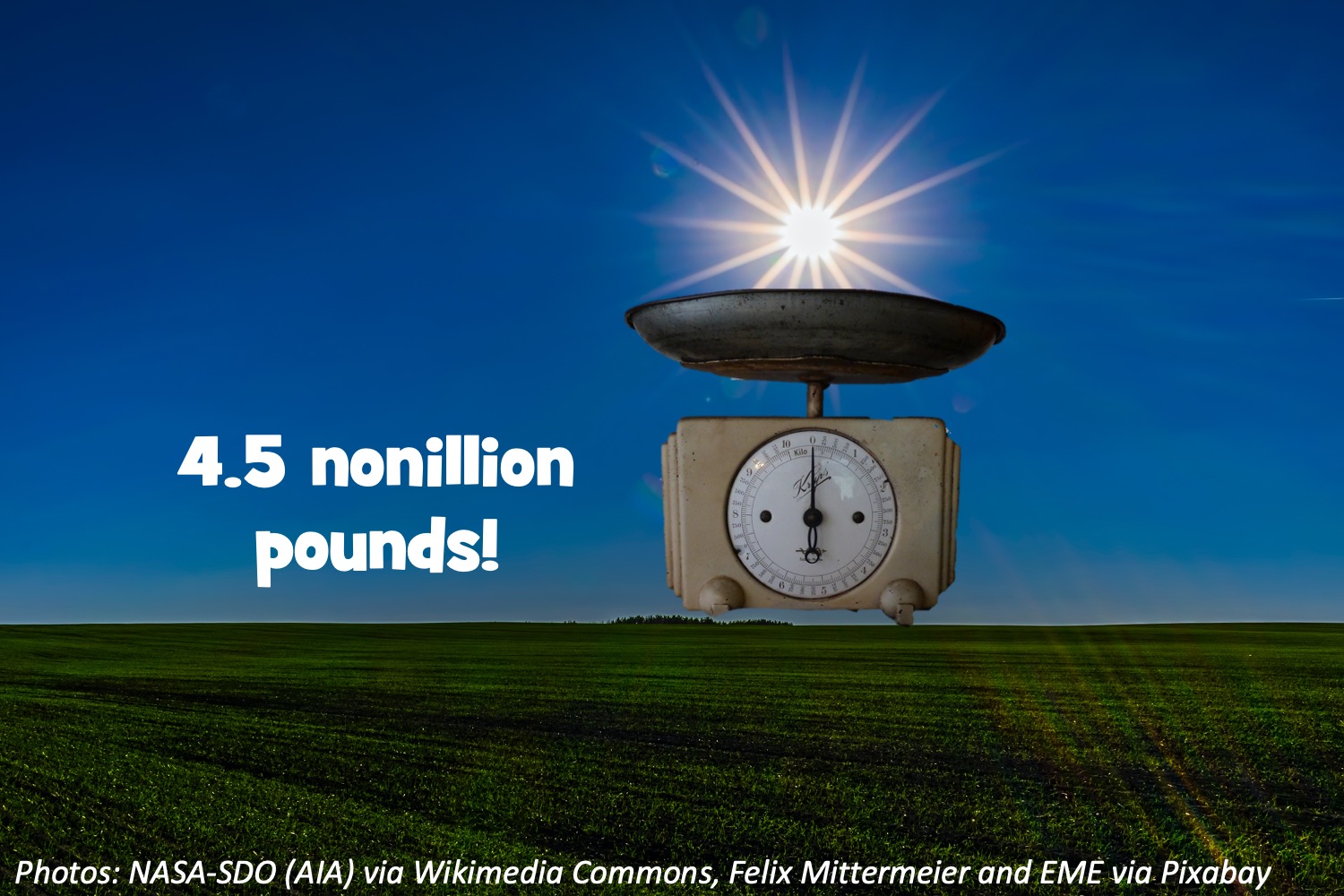In the big blue sky, the Sun looks like a small, shiny circle. But the Sun is actually really huge – 100 times as wide as Earth. So our friend Evy H. asked, how much does the Sun weigh? Well, “weight” means how much Earth’s gravity pulls down on a thing. But its “mass,” or the amount of stuff in it, is 2 nonillion kilograms, which is a 2 followed by thirty zeroes! On a scale on Earth, that would weigh 4 1/2 nonillion pounds — and totally squash us all.
Wee ones: The Sun is really a giant ball, which looks like a circle from the side. Can you find any ball shapes in the room? How many?
Little kids: Along with the Sun and Jupiter, we can see Mercury, Venus, Mars, Saturn and the Moon without binoculars or telescopes. How many sky objects is that? Bonus: The days of the week are named after them, like SUN-day. The 4th day of the week is named after Mercury in other languages. Which day is that?
Big kids: If Earth is 8,000 miles wide and Jupiter is about 10 times as wide, about how wide is Jupiter in miles? Bonus: Then about how wide is the Sun in miles?
The sky’s the limit: Our moon is only about 2,000 miles wide. How many moons wide is the Sun?
Answers:
Wee ones: Different for everyone…you might have a toy ball, a globe or a marble.
Little kids: 7 sky objects. Bonus: Wednesday (miercoles in Spanish, mercredi in French).
Big kids: About 80,000 miles. Bonus: About 800,000 miles.
The sky’s the limit: 400 times, since Earth is 4 times as wide as the Moon and the Sun is 100 times as wide as we are. Every Earth-width “chunk” has 4 moon widths in it.



